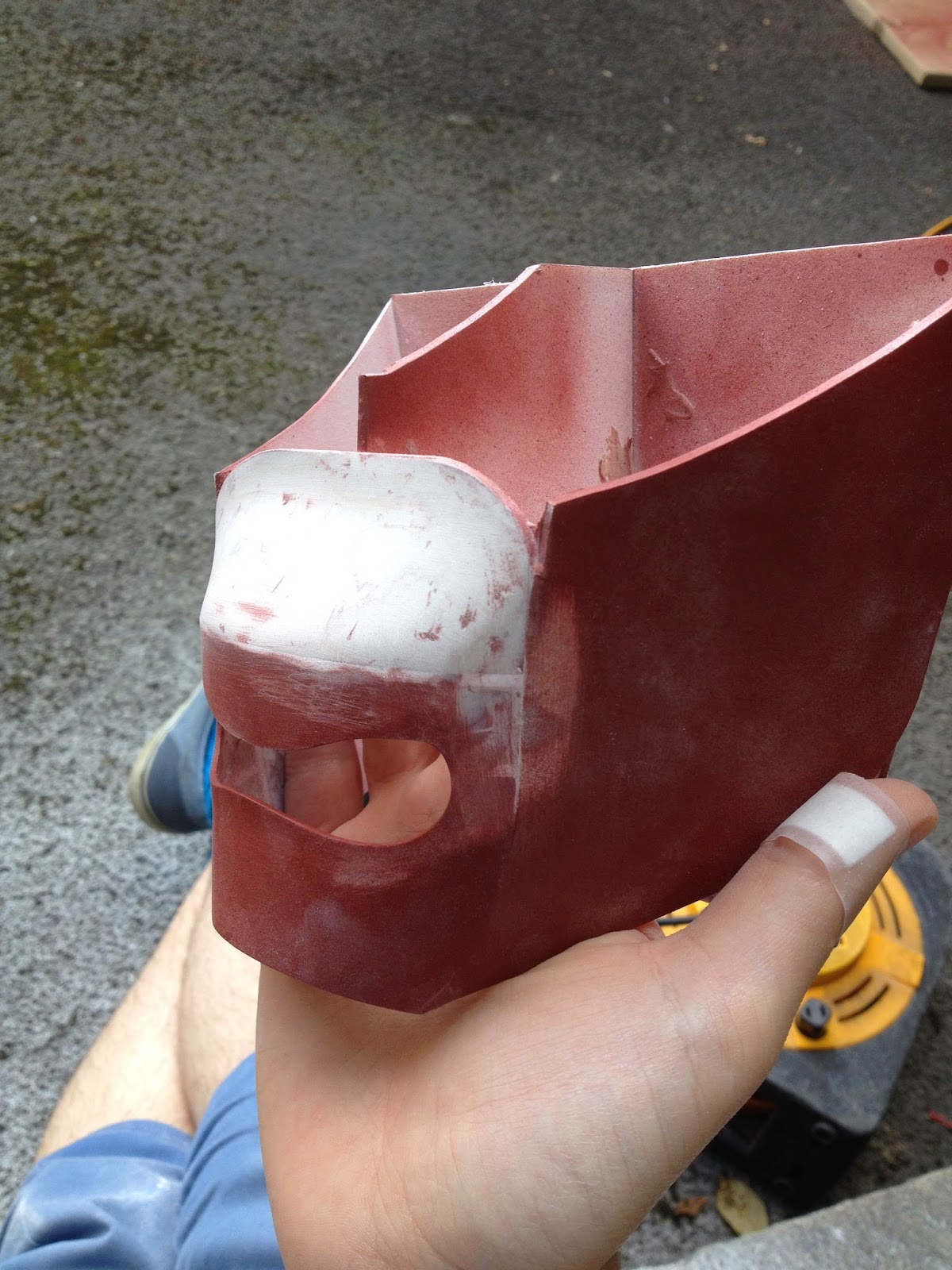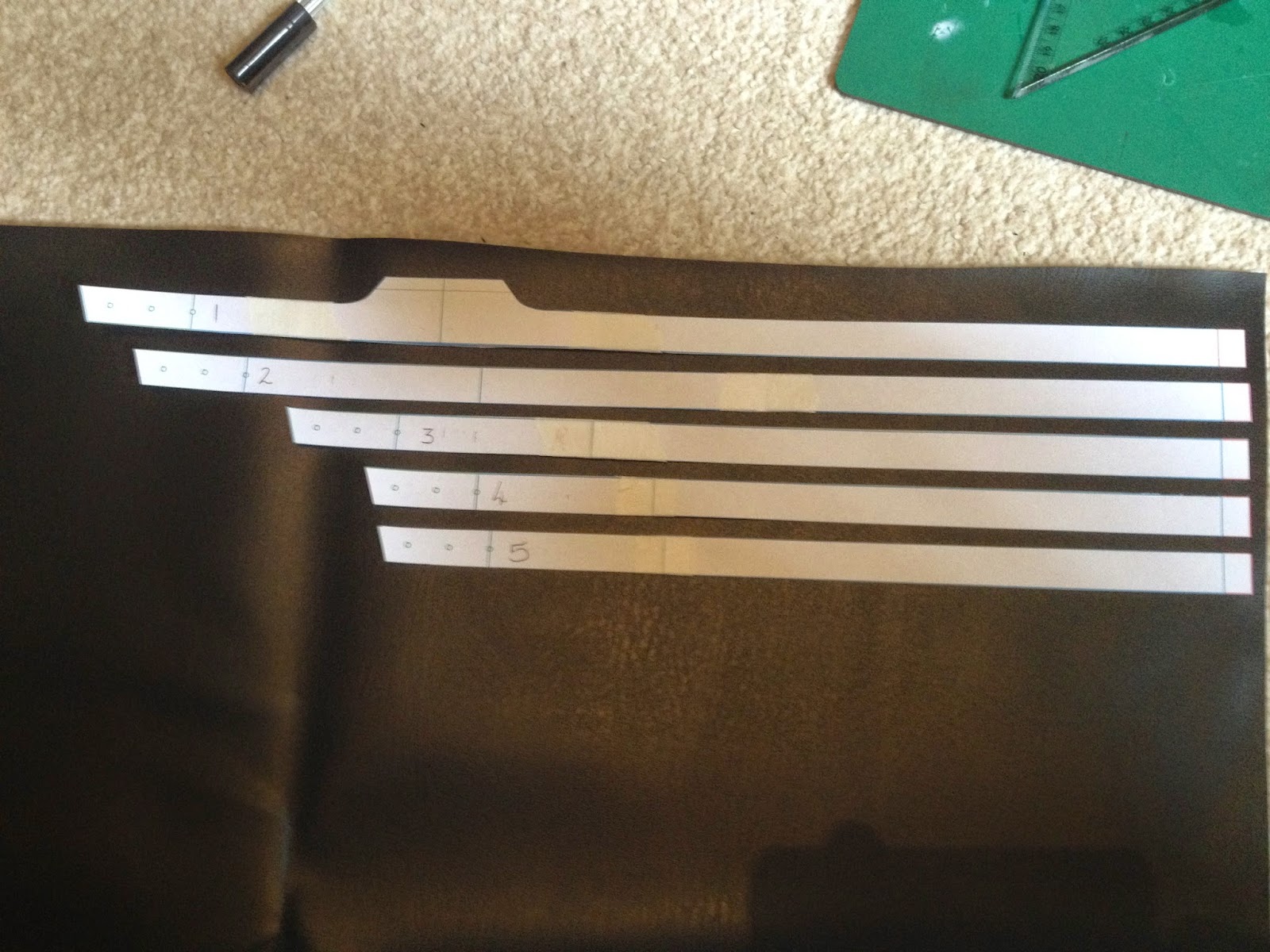The Menpo worn by Scorpion in season 2 is a completely different mask than the one used in the first season, the mask used in the first season was a metal Menpo created by This Company, I took a few screen caps form Scorpions episodes and used them as the basis for my blueprints I created in Illustrator.
These were scaled to fit my face were then turned into pattern pieces to be cut out of 2mm Sintra.
Everything was slotted together to give me a 3D guide for the main face shapes. The negative spaces were then filled with Bondo and sanded back to the guides.
I prefer using sintra for this process as it is easier to sand flush with filler than denser materials such as MDF.

The mouth was cut out at this stage and the top lip was blended back to the face plate.
The next area to block in was the nose, this was done using the sintra framework method like the rest of the mask.
To block out the shape of the nostrils I used masking tape to sketch out the size of the nostril both height and width. I then covered the masking tape with release agent and blocked out the shape with filler.

The teeth were made using strips of sintra with the lines being engraved with diamond files. The rest of the cheek area was also blocked in.
After being sanded, wet-sanded, primered, and wet sanded again the surface was ready for paint. The mask had 5 coats of brown paint and then was top-coated with 6 layers of gold paint. Once the paint had been left to harden for 2 days the gold was wet-sanded to reveal the brown paint underneath to weather the surface. I then made the mask ties and attached them behind the cheek plates.




















































